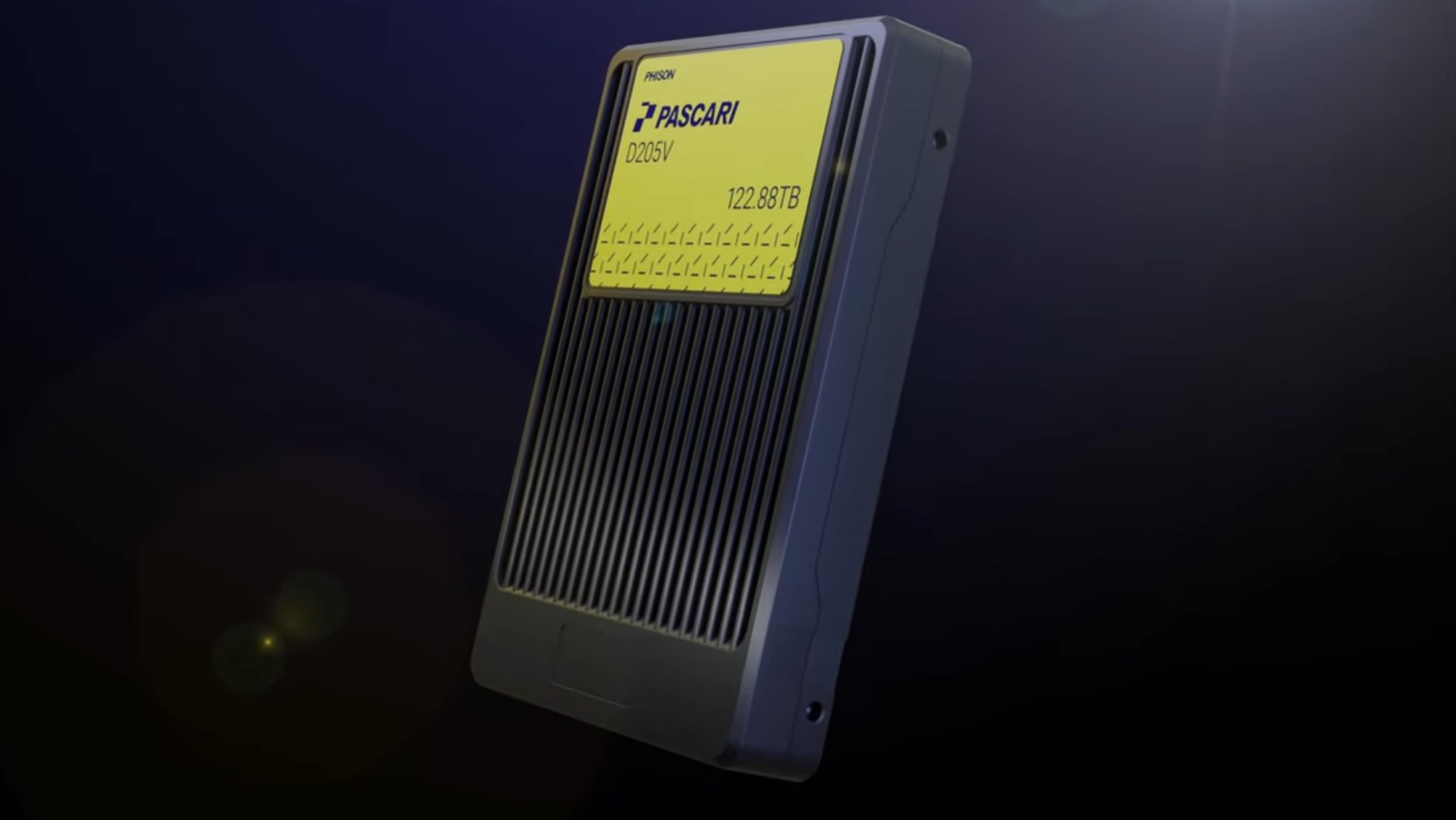
It's a tale as old as time: something big is superseded by something bigger. You take your Blue Eyes White Dragon to the school disco and Billy Big Boots over there whaps out his five-piece Exodia. Such tales are not alien to the hardware world, either, as demonstrated by a recent bout of extraordinarily sized SSDs.
Yesterday I reported that Micron introduced the first PCIe 5 60 TB SSD, which it called "the world’s fastest 60TB data center SSD". Today, however, ex-Intel SSD arm Solidgm introduced what was, just hours ago, the world's highest capacity (122 TB) PCIe SSD. Then, almost immediately after, Phison introduced an even faster 128 TB PCIe SSD.
You'll notice that the image for the Phison drive says 122.88 TB, though, which is the amount of actual capacity the drive has, versus its 128 TB of phyiscal NAND memory. Which does make me wonder whether the Solidigm drive might be the same size as the Phison after all and the companies are just referring to different things.
But that'd be like calling a 2 TB drive a 1.86 TB drive just because only 1.86 TB is usable. In which case Solidigm would have simply missed the buck in labelling it 122 TB. I can't assume they made such a mistake, so I'll assume the Phison is actually higher capacity. And it's much faster, anyway.
Yesterday I did some quick math to see just how many games Micron's 60 TB badboy could house, so why not, let's do the same again for the new king of the hill, the Phison Pascari D205V. 122.88 TB of storage means 768 Stalker 2 installs, based on the current 160 GB system requirements, or 71,028 Crab Champions installs, based on my installed game files. Looking down the middle of the road, now, it could house about 4,388 Valorant installs at roughly 28 GB per install.
The Phison's a 5.0 drive, too, although it has pretty poor write speeds compared to some of the best SSDs for gaming, this being because it's aimed at datacentre use. Read speeds are stellar, though, rated for up to 14,600 MB/s. Removing other relevant but party pooping variables from the equation, that means it could transfer all 160 GB of Stalker 2 to another drive of its ilk in just shy of 11 seconds (on your marks, get set...).
It's also adorning a dashing bumblebee yellow which half makes me want to buy a server rack and go into debt to set up a completely overkill home server (I could back up my entre system 80 times on just one of these drives).
I can't help but feel sorry for Micron and Solidigm, though, being pipped at the last minute by a bigger, faster, yellower rival. I guess that's the risk you're running when you're racing to make the most of the rapidly growing AI datacentre market. A market which, by the way, shows little sign of slowing down. I guess that might mean we can expect even bigger "world's biggest" drives in the near future.







